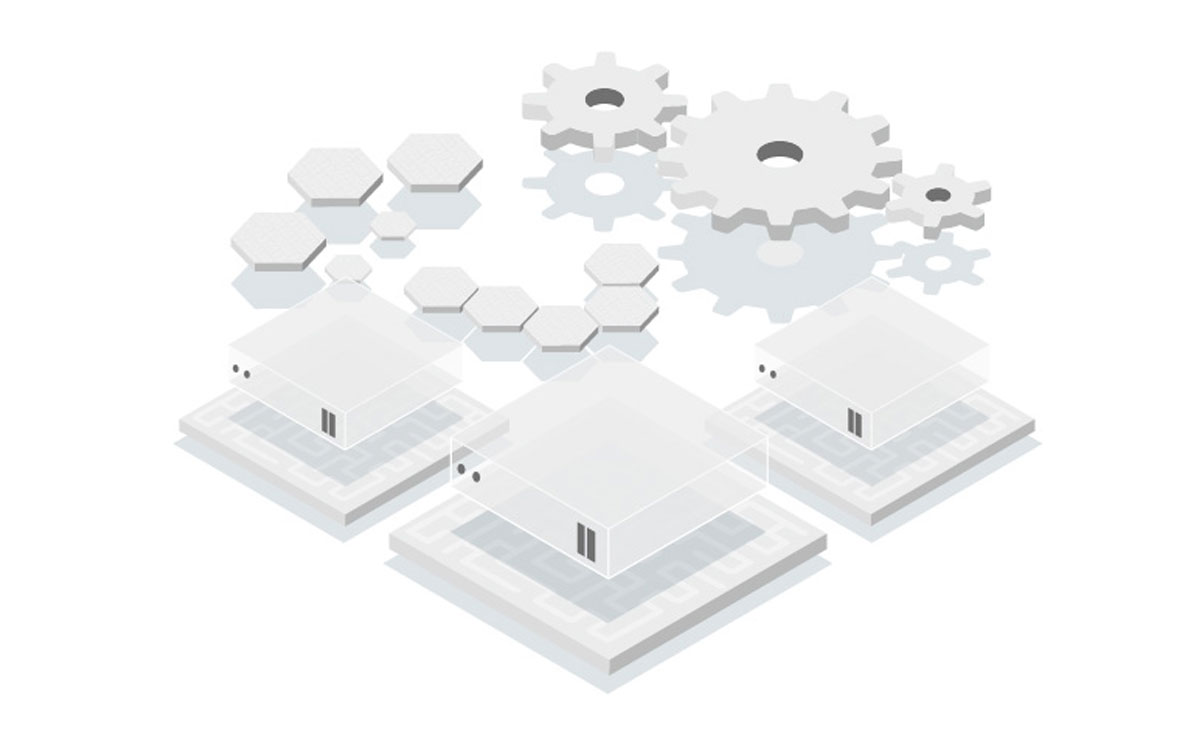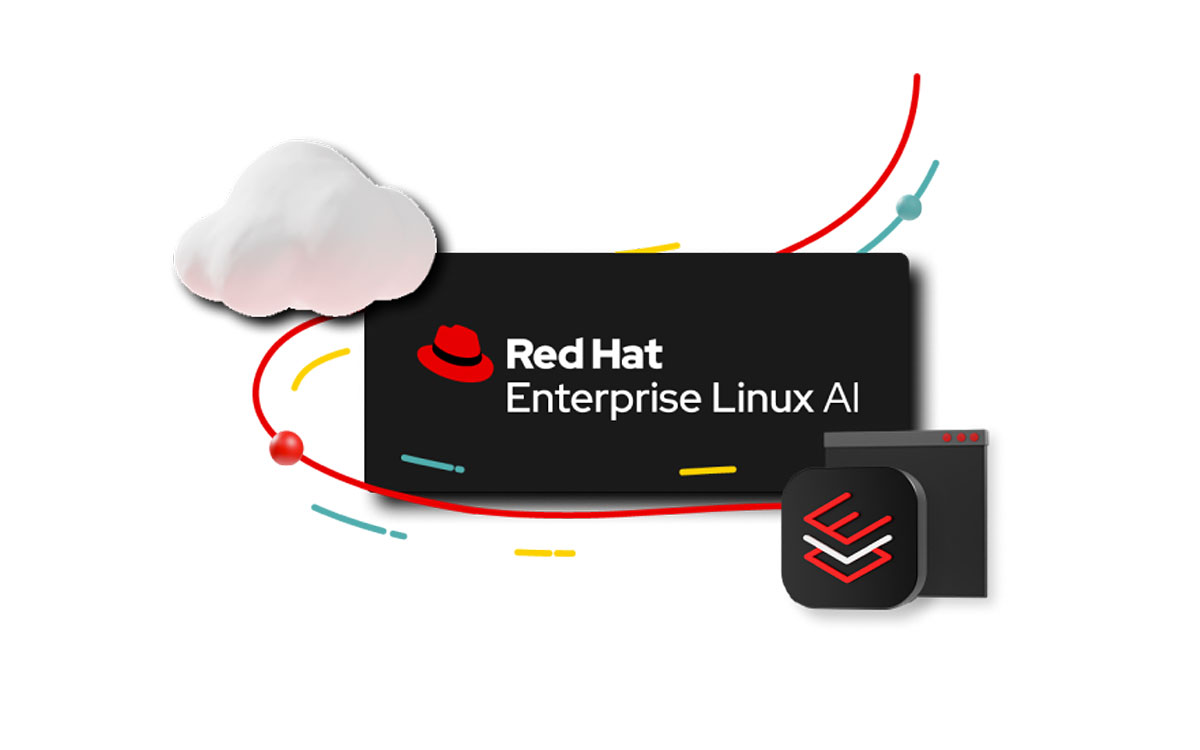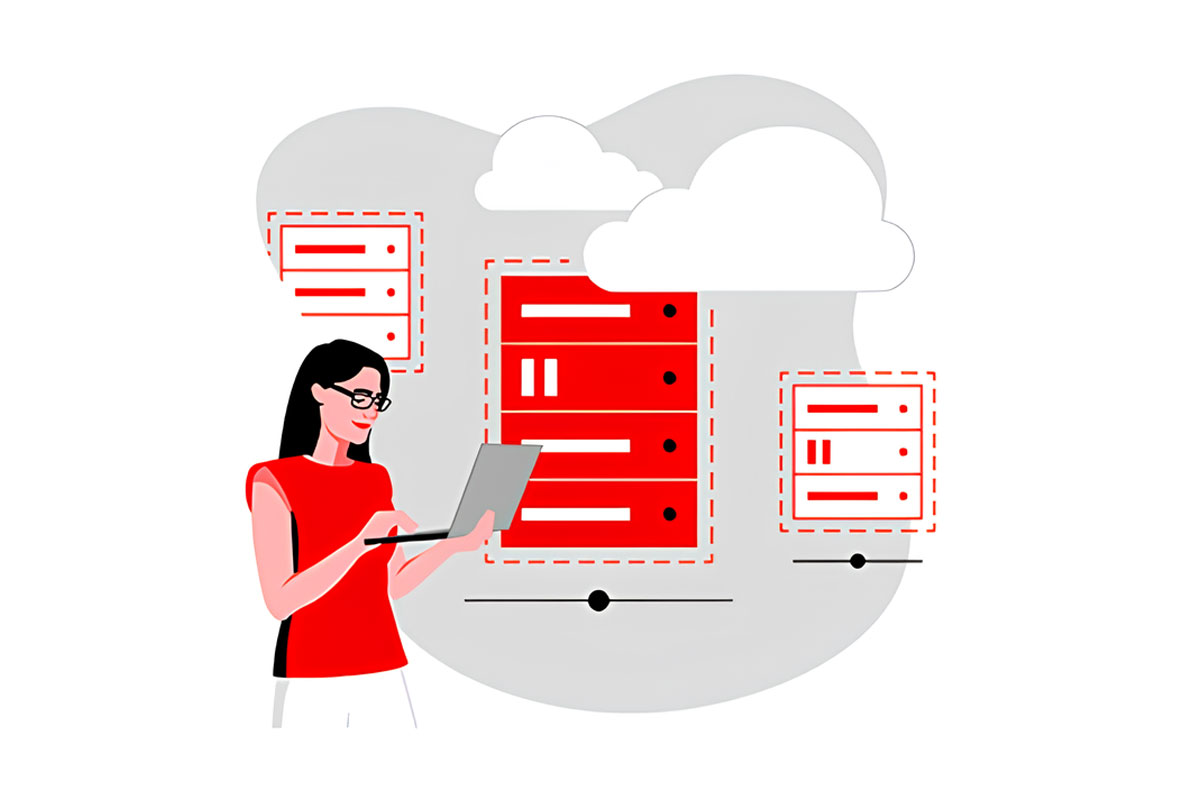Red Hat วางตลาด OpenStack Service on OpenShift
เพิ่มความล้ำสมัยให้ OpenStack พร้อมช่วยองค์กรสร้างเครือข่ายขนาดใหญ่ที่รองรับอนาคต
เร้ดแฮท ผู้นำระดับโลกด้านโซลูชันโอเพ่นซอร์ส ประกาศวางตลาด (general availability) Red Hat OpenStack Services on OpenShift ผลิตภัณฑ์ที่เป็นความเคลื่อนไหวครั้งสำคัญของแพลตฟอร์ม OpenStack ของเร้ดแฮท และเป็นการเดินหน้าครั้งสำคัญขององค์กรต่าง ๆ โดยเฉพาะผู้ให้บริการด้านโทรคมนาคมที่จะใช้วิธีการใหม่นี้ในการควบรวมเครือข่ายแบบดั้งเดิมและเครือข่ายที่เป็นคลาวด์-เนทีฟเข้าเป็นหนึ่งเดียวกัน บนโครงสร้างเครือข่ายที่ทันสมัยได้อย่างมีประสิทธิภาพมากขึ้น นอกจากนี้ Red Hat OpenStack Services on OpenShift เปิดเส้นทางสายใหม่ให้องค์กรต่าง ๆ สามารถทบทวนกลยุทธ์ด้านเวอร์ชวลไลเซชันของตน สามารถสเกล อัปเกรด และเพิ่มทรัพยากรให้กับสภาพแวดล้อมคลาวด์ของตนได้อย่างไม่ยุ่งยาก
องค์กรที่มีการทำงานสเกลใหญ่ต้องบริหารจัดการความซับซ้อนที่มีรูปแบบใหม่ ๆ เกิดขึ้นอย่างต่อเนื่องตามการเปลี่ยนแปลงของอุตสาหกรรมที่องค์กรนั้น ๆ ให้บริการอยู่ องค์กรเหล่านี้ต้องสร้างโครงสร้างพื้นฐานเครือข่ายที่ทันสมัยที่สามารถสเกลการทำงานไปที่ปลายทางของงาน (edge) ได้ จึงต้องการความสามารถในการปรับขนาดทรัพยากรได้โดยอัตโนมัติ เพื่อให้สามารถปรับการใช้ทรัพยากรให้เหมาะกับแอปพลิเคชันที่ทำงานอยู่บนสภาพแวดล้อมที่แตกต่างกันได้ ดังนั้นโครงสร้างพื้นฐานหลักที่รองรับการทำงานจะต้องสามารถผสานแอปพลิเคชันที่เป็นเวอร์ชวลไลซ์แบบเดิม เข้ากับแอปพลิเคชันแบบคลาวด์-เนทีฟที่ทันสมัยได้เป็นเนื้อเดียวกัน
Red Hat OpenStack Services on OpenShift ช่วยให้องค์กรจัดการความซับซ้อนนี้ได้จากจุดเดียว ให้สามารถใช้งานแอปพลิเคชันทั้งสองรูปแบบนี้ได้อย่างรวดเร็ว ง่ายดาย ตั้งแต่การใช้งานที่ส่วนกลาง (core) ไปจนถึง edge ทั้งนี้ Red Hat OpenStack Services on OpenShift สามารถใช้โหนดการประมวลผลได้เร็วกว่าเดิมถึง 4 เท่า เมื่อเทียบกับ Red Hat OpenStack Platform 17.1 และมีคุณประโยชน์เพิ่มเติมดังนี้
- โซลูชันนี้มี Ansible ซึ่งเป็นโซลูชันด้านระบบอัตโนมัติอยู่ด้วย จึงสามารถเร่งกระบวนการผลิตตั้งแต่ต้นจนวางตลาด (time-to-market) ให้เร็วขึ้น
- ส่วนที่ทำหน้าที่ควบคุม (control plane) ของ OpenStack ที่สเกลได้ สามารถบริหารจัดการ Kubernetes-native pods ที่ทำงานอยู่บน Red Hat OpenShift
- ดูแลจัดการส่วนควบคุมและบริหารจัดการไลฟ์ไซเคิล หลังจากผ่านช่วงการติดตั้งแล้ว (day 2 operations) ได้ง่ายขึ้น
- จัดการค่าใช้จ่ายได้มีประสิทธิภาพมากขึ้น และมีอิสระในการเลือกว่าจะเชื่อมต่อใช้งานกับบุคคลที่สามรายใด รวมถึงมีอิสระในการเลือกใช้ทรัพยากรแบบเวอร์ชวลไลซ์ต่าง ๆ
- ประสิทธิภาพในการตรวจตราความปลอดภัยและการปฏิบัติตามกฎระเบียบของส่วนควบคุมที่มากขึ้นบวกกับระบบควบคุมการเข้าใช้งานตามสิทธิ์ของแต่ละบุคคล (Role-based Access Control) จะทำการเข้ารหัสการสื่อสารต่าง ๆ และหน่วยความจำแคช (memory cache)
- โซลูชันนี้เข้าใจสถานะและความสมบูรณ์ของไฮบริดคลาวด์ขององค์กรได้ลึกมากขึ้น ด้วยการวัดประสิทธิภาพของส่วนต่อประสานกับผู้ใช้ (user interface), การใช้ส่วนเสริมที่ช่วยให้ผู้ดูแลระบบ สามารถสร้างสแต็กการตรวจสอบแบบสแตนด์อโลนที่กำหนดค่าได้อย่างอิสระ (cluster observability operator) และ cluster logging operator ของ OpenShift
- โครงสร้างพื้นฐานได้รับการปรับให้เหมาะกับการใช้ AI รองรับเทคโนโลยีที่ใช้ฮาร์ดแวร์เร่งการทำงาน เพื่อช่วยให้มั่นใจได้ว่าการผสานรวมเป็นไปอย่างราบรื่นและใช้ฮาร์ดแวร์เฉพาะทางสำหรับงานด้าน AI ได้อย่างมีประสิทธิภาพ
ความมุ่งมั่นและการลงทุนด้าน OpenStack ของเร้ดแฮทยังคงเข้มข้นต่อเนื่อง และเร้ดแฮทยังคงเป็นผู้นำในการมีส่วนร่วมส่งกลับความรู้ความก้าวหน้าให้กับคอมมิวนิตี้ทั้งระดับโปรเจกต์และระดับผลิตภัณฑ์ ทั้งนี้ OpenStack ยังคงเป็นส่วนประกอบสำคัญของโครงสร้างพื้นฐานไอทีขนาดใหญ่ โดยเฉพาะในแวดวงโทรคมนาคม การวางตลาด OpenStack Services on OpenShift ครั้งนี้จะช่วยให้วิธีการที่องค์กรใช้มีประสิทธิภาพมากขึ้น และสามารถบริหารจัดการฟุตพริ้นท์ของการใช้ OpenStack ได้อย่างต่อเนื่อง
การสนับสนุนที่เชื่อถือได้ พึ่งพาได้ แก่ผู้ให้บริการโทรคมนาคม
เร้ดแฮทนำเสนอบริการที่เชี่ยวชาญกระบวนการใช้งานทุกขั้นตอน เพื่อช่วยผู้ให้บริการโทรคมนาคมบรรลุเป้าหมายอย่างรวดเร็ว ให้การอบรมที่เจาะจงกับทีมงานของแต่ละลูกค้า เพื่อให้เกิดความเชี่ยวชาญทางเทคนิคในองค์กรอย่างรวดเร็ว ไม่ว่าจะเป็นลูกค้าที่เพิ่งเริ่มใช้ OpenStack หรือลูกค้าที่กำลังย้ายจากระบบเดิม ทั้งยังมีบริการให้คำปรึกษาเพื่อช่วยลูกค้าวางแผนและใช้โปรเจกต์ต่าง ๆ บนสภาพแวดล้อมของบริษัทด้านโทรคมนาคม โดยเน้นไปที่การลดความเสี่ยงในการปฏิบัติงานให้เหลือน้อยที่สุด นอกจากนี้ Red Hat Technical Account Managers ยังให้แนวทางและคำแนะนำอย่างต่อเนื่องตลอดไลฟ์ไซเคิลของ Red Hat OpenStack Services on OpenShift ช่วยให้การใช้งานราบรื่นและปลอดภัย
อย่างไรก็ตามลักษณะการดำเนินงานเหล่านี้จะมีการเคลื่อนไหวตลอดเวลาและซับซ้อนมากขึ้นในอีกไม่กี่ปีข้างหน้า เร้ดแฮทจะเดินหน้าผสาน Red Hat OpenStack Platform กับ Red Hat OpenShift เพิ่มเติมเพื่อช่วยให้ผู้ให้บริการโทรคมนาคมแก้ปัญหาที่พบในปัจจุบัน และเตรียมพร้อมใช้ประโยชน์จากโอกาสต่าง ๆ ที่เครือข่ายอัจฉริยะที่ใช้ AI จะมีให้ พร้อมกับการใช้งานที่ edge อย่างมีประสิทธิภาพ และขยายขนาดการใช้งานได้ตามต้องการ ทั้งนี้ 94% ของบริษัทโทรคมนาคมที่อยู่ใน Fortune 500 ใช้เร้ดแฮท[3]ซึ่งเป็นการย้ำถึงความสามารถที่ได้รับการพิสูจน์แล้วของเร้ดแฮทในการสนับสนุนและเพิ่มความทันสมัยให้กับเครือข่ายของผู้ให้บริการด้านนี้ Red Hat OpenStack Services on OpenShift ช่วยให้ผู้ให้บริการโทรคมนาคมสามารถขยายบริการใหม่ แอปพลิเคชันใหม่ และมีแหล่งรายได้ใหม่ ๆ เป็นการขับเคลื่อนธุรกิจสู่ 5G และอื่น ๆ ที่ก้าวไกลกว่าที่กำลังจะตามมา
คำกล่าวสนับสนุน
Chris Wright, senior vice president of global engineering and chief technology officer, Red Hat
“ความทุ่มเทของเร้ดแฮทที่มีต่อ OpenStack เห็นได้จากการมีส่วนร่วมคืนความรู้สู่คอมมิวนิตี้อย่างกว้างขวางของเราต่อโปรเจกต์นี้ เราเป็นผู้นำในคอมมิวนิตี้ OpenStack และเราเน้นไปที่การมอบโซลูชัน OpenStack ที่ใช้ในระดับองค์กรให้กับลูกค้าของเรา แน่นอนว่าความทุ่มเทนี้ต้องพัฒนาต่อไปตามความต้องการของลูกค้าของเราที่เปลี่ยนแปลงไป และ Red Hat OpenStack Services on OpenShift จะช่วยมอบแพลตฟอร์มแอปพลิเคชันที่ยืดหยุ่นและเป็นหนึ่งเดียวให้กับลูกค้า OpenStack ของเรา”
Takeshi Maehara, deputy general manager, network and cloud platforms, KDDI
“KDDI ใช้ Red Hat OpenStack Platform และ Red Hat OpenShift มาอย่างยาวนาน และเรารู้สึกตื่นเต้นกับการวางตลาดของ Red Hat OpenStack Services on OpenShift ครั้งนี้ โซลูชันเหล่านี้ช่วยให้เราพัฒนาบริการใหม่ ๆ และใช้แอปพลิเคชันใหม่ ๆ ได้อย่างยืดหยุ่นและรวดเร็ว การบูรณาการนี้จะช่วยให้องค์กรต่าง ๆ รวมถึง KDDI สามารถบริหารจัดการ ปรับปรุงระบบและการให้บริการให้ทันสมัยได้จากส่วนกลาง (core) ไปจนถึง edge”
Nilay Rathod, technology automation and services lead, Spark New Zealand
“Spark ยินดีที่เร้ดแฮทพัฒนา Red Hat OpenStack Platform อย่างต่อเนื่อง Red Hat OpenStack Services on OpenShift จะช่วยให้โครงสร้างพื้นฐานโทรคมนาคมของเราให้มีประสิทธิภาพมากขึ้น มีความยืดหยุ่น มีความสามารถในการสเกลและความคล่องตัว ความร่วมมือกับเร้ดแฮทในการขับเคลื่อนนวัตกรรมอย่างต่อเนื่อง ทำให้เรามอบประสิทธิภาพและความเชื่อถือได้ให้กับลูกค้าของเรา และเรากำลังสร้างอนาคตของเครือข่ายไวเรสโมบายของนิวซีแลนด์ไปด้วยกัน”




